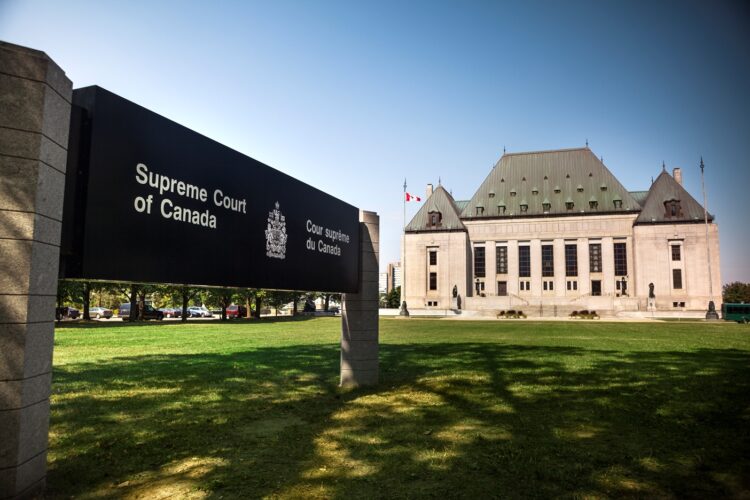Legal ramifications to First Nations of provincial secession
Recent legislative amendments proposed by the Government of Alberta in the Election Statutes Amendment Act, 2025 (Bill 54), which was tabled on April 29, 2025, have led many to believe that this is the first step towards the province’s end goal of separating from the Confederation of Canada.

Bill 54
Bill 54 includes amendments to both the Referendum Act and Citizen Initiative Act, which amendments appear to loosen the rules around referendums, making it easier to call “citizen-led” referendums on constitutional issues such as provincial secession. The proposed amendments to the Referendum Act would remove the requirement that a referendum be held before the Legislative Assembly makes a resolution authorizing an amendment to the Constitution of Canada, while the amendments to the Citizen Initiative Act would reduce the number of signatures required to launch a citizen-initiated referendum to 10% of eligible voters from the current 20% requirement and extend the period of time to gather the signatures from 90 to 120 days.
These amendments could make it easier for a citizen-led referendum on Alberta’s separation from Canada.
Secession process
In response to numerous unsuccessful referendums on separation in Quebec and a declaration by the Supreme Court of Canada that a province does not have a unilateral right to secede, the federal government enacted the Clarity Act. This Act provides guidance on how the federal and provincial governments should approach provinces seeking to separate from the Confederation of Canada. In short, after a successful referendum shows “a clear expression of a will by a clear majority of the population of that province that the province cease to be a part of Canada,” the federal and provincial governments will enter into negotiations to amend the Canadian Constitution to potentially allow for a province’s secession. Both the Supreme Court of Canada and the federal government, in enacting the Clarity Act, were clear in stating that while there is an obligation for the governments to enter into negotiations, there is no requirement to accept a separation in the event negotiations break down.
Legal ramifications of secession
It is clear that a provincial secession will have broad legal ramifications on First Nations.
In the event of a province separating from the Confederation of Canada, a central consideration will be the impact of such separation on Treaty rights, including jurisdiction over mineral rights. Treaties are active, living instruments within Canada’s constitutional architecture, treated as sacred agreements entered into with the Crown that continue in perpetuity. The “Crown,” in relation to the obligations, rights and responsibilities under the Treaties, includes both the federal and provincial governments.
Treaties serve as the foundation for Canada’s claim to much of its legal territory. They were not a land surrender, and First Nations have always maintained that they did not relinquish, cede nor surrender rights to natural resources at the time of Treaty negotiations. This becomes a major issue if a seceding province seeks to separate from Canada, and seeks to take lands and the underlying mines and minerals within the province’s boundaries with it.
In any negotiations relating to provincial secession, including regarding impacts on Treaty rights, the Crown must exercise its powers in conformity with the honour of the Crown, and the exercise of those powers is subject to the fiduciary duties that lie on the Crown in dealing with Aboriginal interests. These constitutional principles dictate that the unilateral altering or extinguishment of any Treaty rights is unconstitutional.
Such negotiations must also adhere to the United Nations Declaration on the Rights of Indigenous Peoples Act, which affirms that the United Nations Declaration on the Rights of Indigenous Peoples (UNDRIP) has application in Canada. UNDRIP articulates certain human rights of Indigenous peoples including the right of Indigenous peoples to self-determination and to use and develop their traditional territories and resources. In particular, Article 19 of UNDRIP requires that Canada consult and cooperate in good faith with Indigenous peoples to obtain their free, prior and informed consent before adopting and implementing legislative or administrative measures that may affect them. Any legislative or administrative measure in respect of secession would very likely trigger the requirement under Article 19.
Conclusion
While Bill 54 is merely an initial step in the long process of Alberta seceding from the Confederation of Canada, it raises profound and wide-ranging concerns for First Nations across the country.
Our Indigenous practice group continues to monitor the developments relating to Bill 54 and any potential referendums on Alberta’s separation from Canada. MLT Aikins has extensive experience in the protection of Treaty rights. Contact our Indigenous Practice Group to learn more.
Note: This article is of a general nature only and is not exhaustive of all possible legal rights or remedies. In addition, laws may change over time and should be interpreted only in the context of particular circumstances such that these materials are not intended to be relied upon or taken as legal advice or opinion. Readers should consult a legal professional for specific advice in any particular situation.




